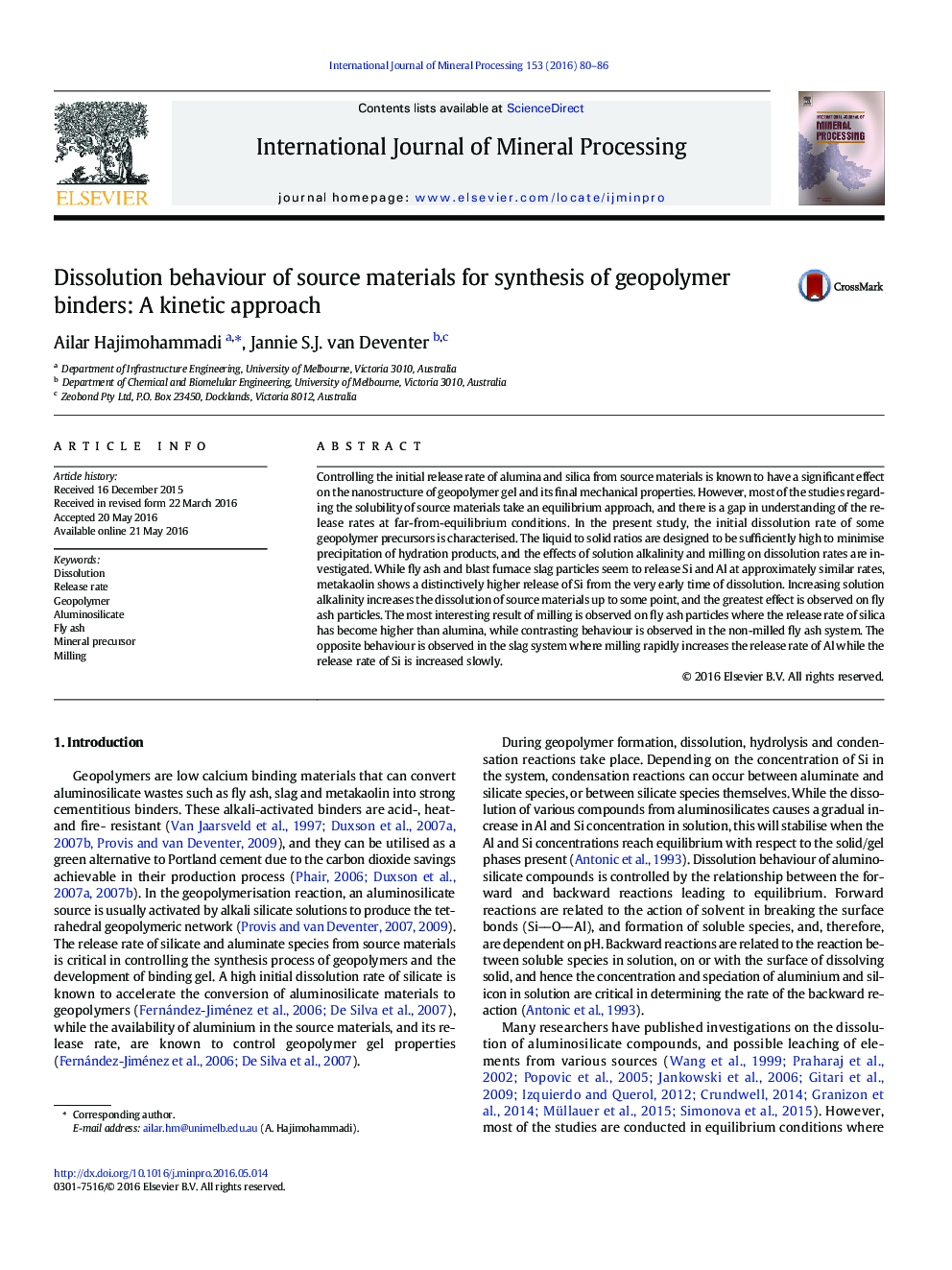| Article ID | Journal | Published Year | Pages | File Type |
|---|---|---|---|---|
| 213696 | International Journal of Mineral Processing | 2016 | 7 Pages |
•Dissolution rate of geopolymer precursors is studied using a kinetic approach.•The existing gap in release rates at far-from-equilibrium condition is addressed.•Release rates affect the nanostructure of geopolymers and the properties of binder.•Dissolution results have implications for the design of geopolymeric binders.
Controlling the initial release rate of alumina and silica from source materials is known to have a significant effect on the nanostructure of geopolymer gel and its final mechanical properties. However, most of the studies regarding the solubility of source materials take an equilibrium approach, and there is a gap in understanding of the release rates at far-from-equilibrium conditions. In the present study, the initial dissolution rate of some geopolymer precursors is characterised. The liquid to solid ratios are designed to be sufficiently high to minimise precipitation of hydration products, and the effects of solution alkalinity and milling on dissolution rates are investigated. While fly ash and blast furnace slag particles seem to release Si and Al at approximately similar rates, metakaolin shows a distinctively higher release of Si from the very early time of dissolution. Increasing solution alkalinity increases the dissolution of source materials up to some point, and the greatest effect is observed on fly ash particles. The most interesting result of milling is observed on fly ash particles where the release rate of silica has become higher than alumina, while contrasting behaviour is observed in the non-milled fly ash system. The opposite behaviour is observed in the slag system where milling rapidly increases the release rate of Al while the release rate of Si is increased slowly.
